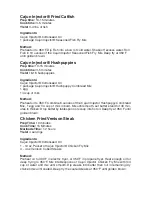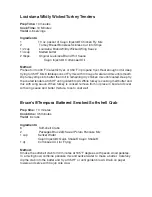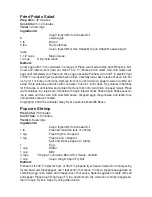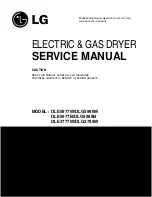
Deep Frying
Foods to be deep-fried should be of a size and shape that permits individual pieces
to float freely in the fat. The fat should surround the food and begin cooking it on all
sides at once. The food is usually battered or breaded to protect the food’s surface
moisture from coming into contact with the hot oil creating an exterior layer or crust
sealing food flavors and juices inside. We suggest the following tips:
1. Use a pan wider than it is deep, and that is wider than the heat source (so oil
won’t come in contact with direct heat.) Always use clean, fresh oil or previously
used oil, properly filtered and refreshed by frying a raw potato or handful of parsley
for about five minutes prior to frying food for dinner. Delicate foods should not be
fried in oil previously used to fry strongly flavored foods.
2. Much of fried food odors can be absorbed by placing a small cup of bleach
nearby. Be sure to mark as “Bleach” and keep children away from the cup as well
as from the hot oil.
3. Never fill your fryer more than half full of oil. You will need a minimum of three
inches between the oil surface and the top of the pot.
4. Constantly monitor temperature of the oil. Never crowd the frying oil, fry in small
batches. The oil should freely bubble around each piece of food at correct tempera-
ture.
5. Use proper tools when removing fried foods and draining oils to a plate with
several layers of paper towels. To add more absorbency, place a brown paper bag
below the paper towels on the plate.
6. Keep deep-fried foods warm by placing in a single layer on fresh paper towels
(after initial draining step above is finished) in a 250˚F oven while you complete
frying.
Summary of Contents for Electric Fryer - Boiler - Steamer
Page 42: ......















































